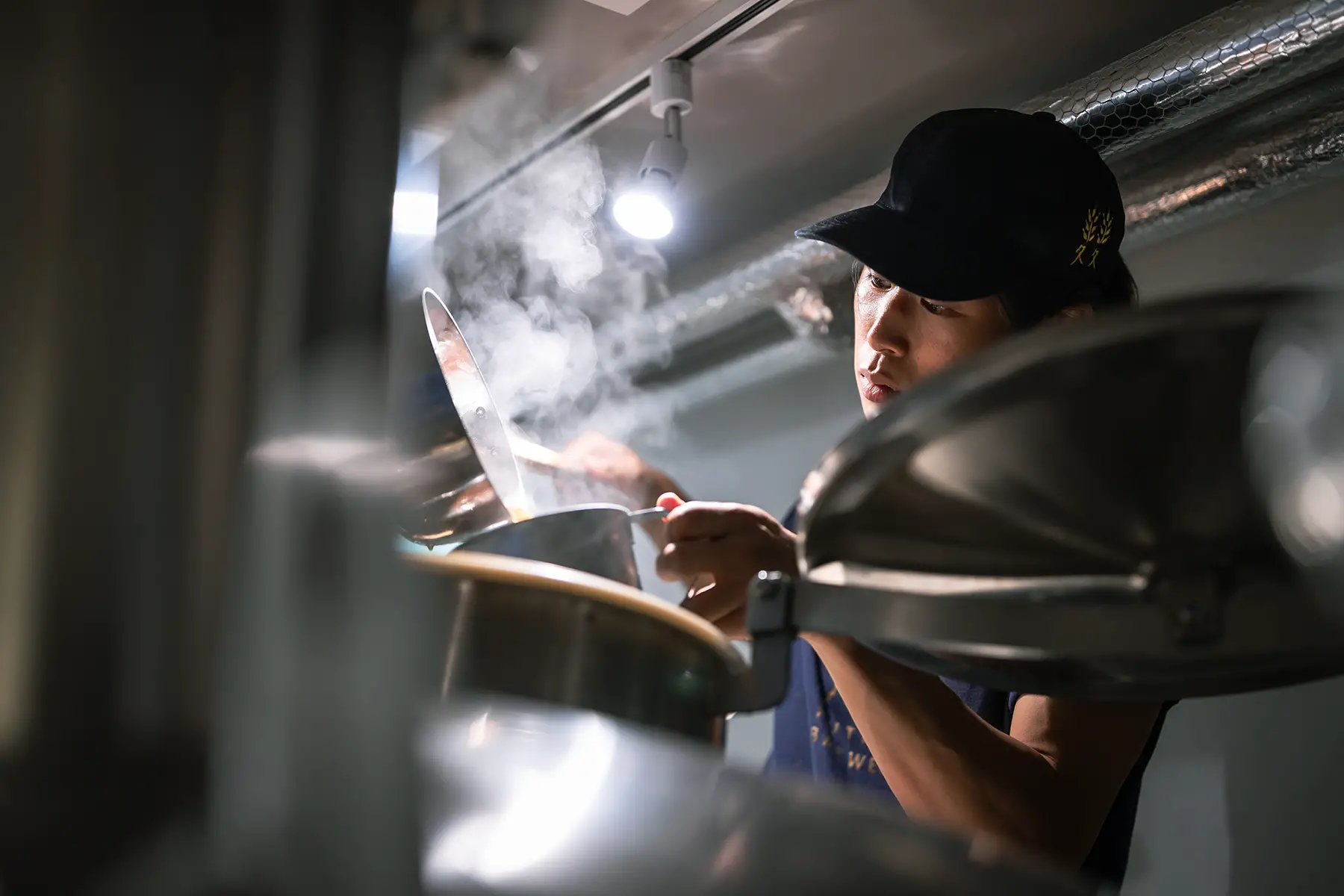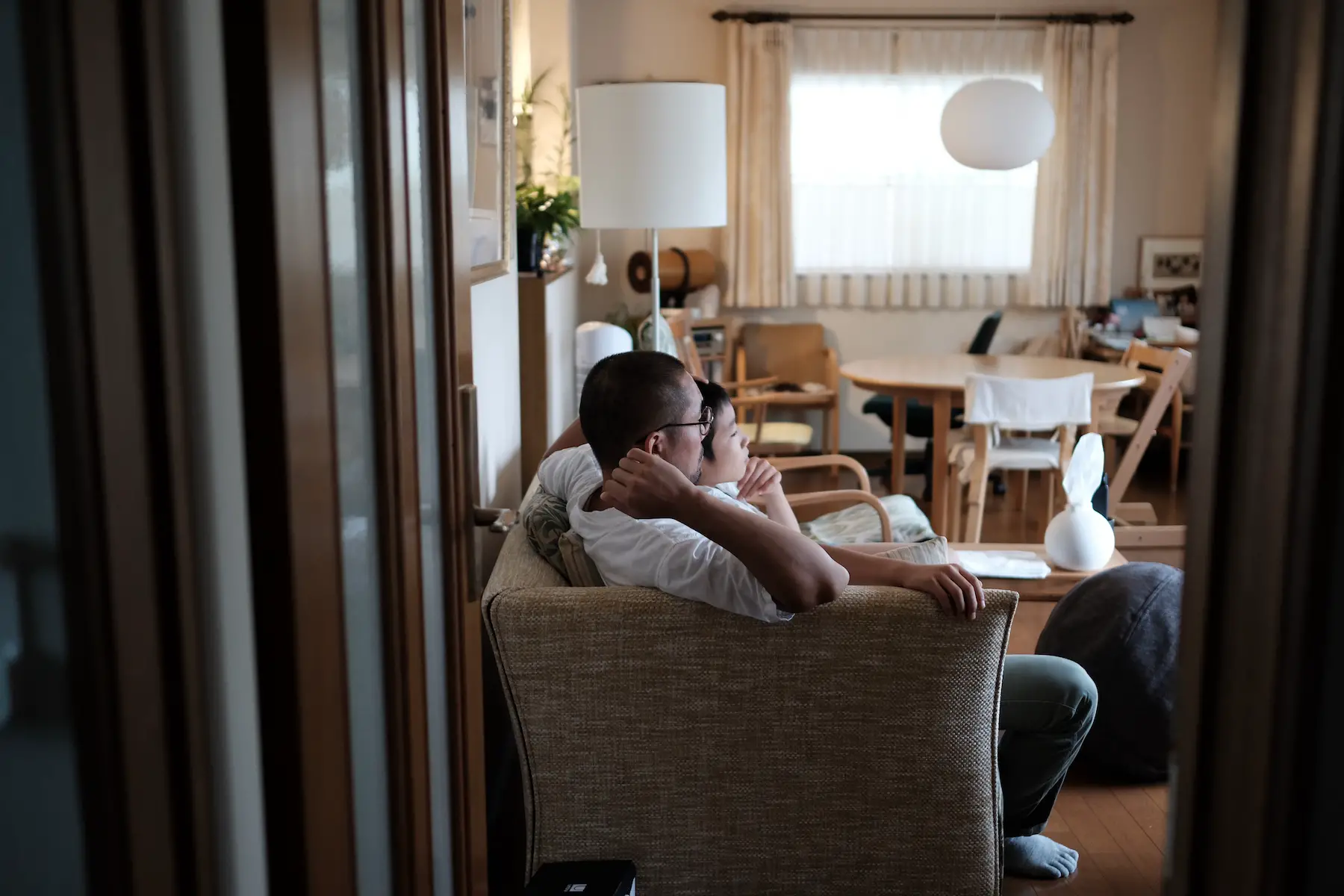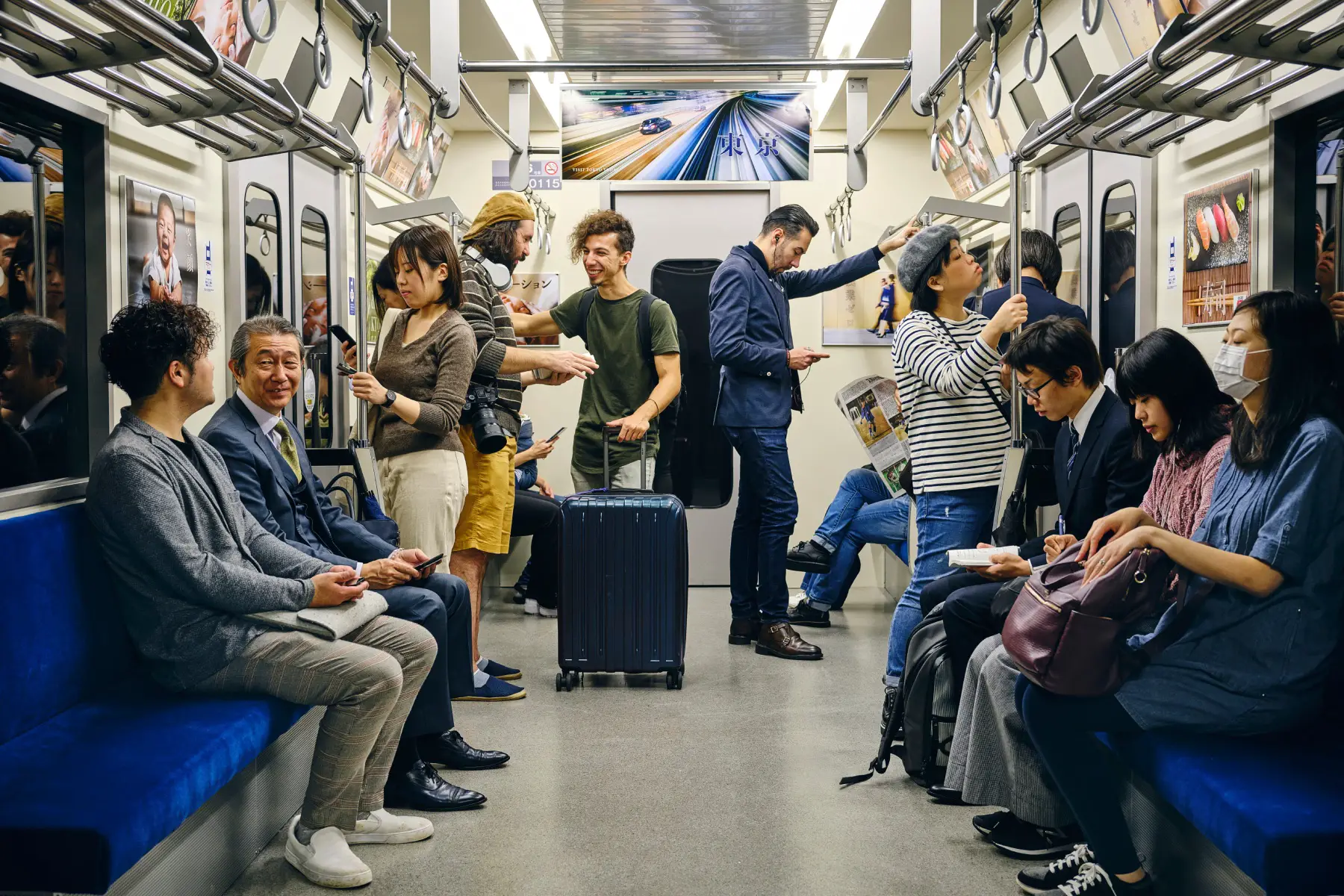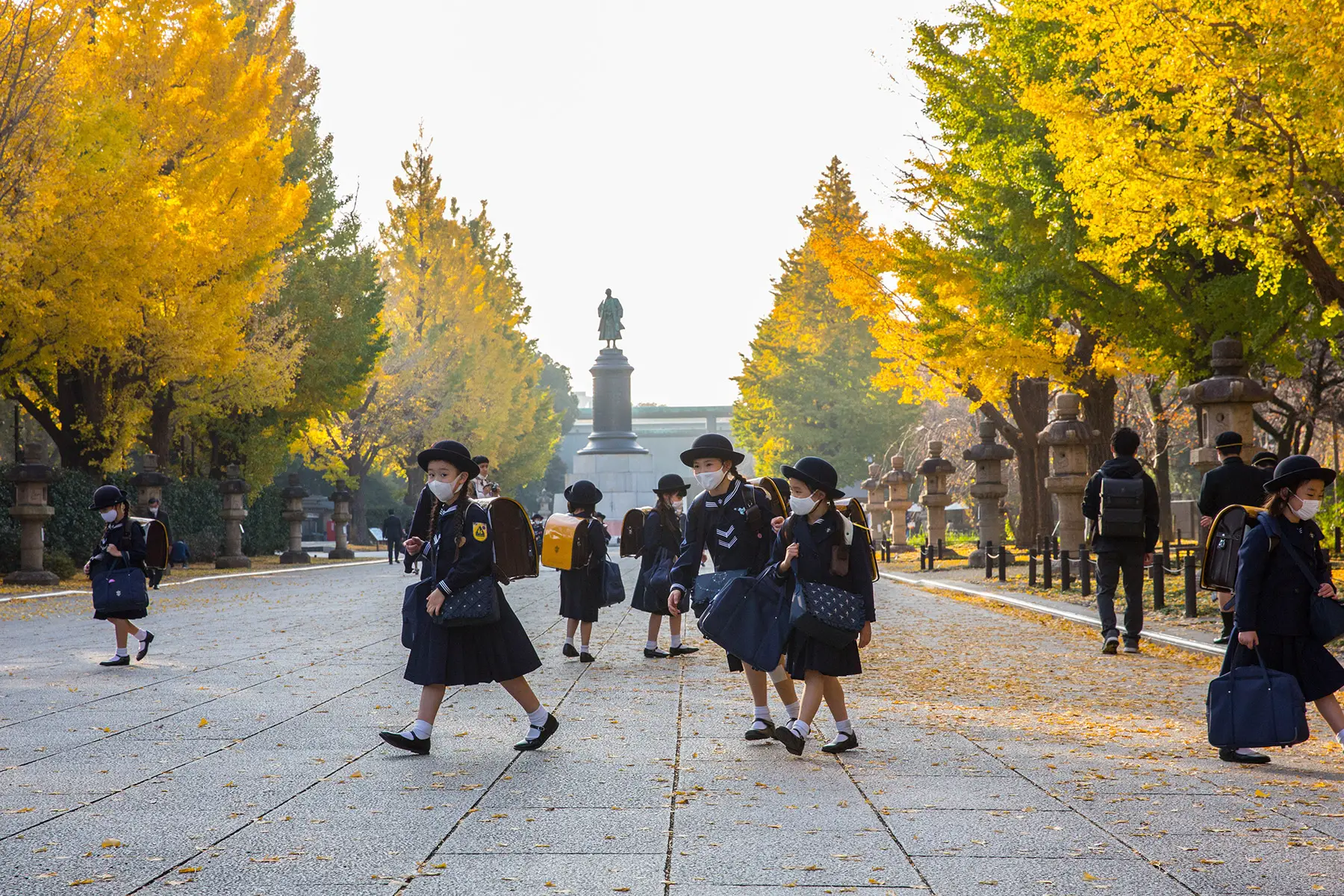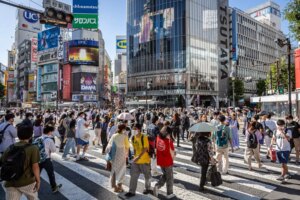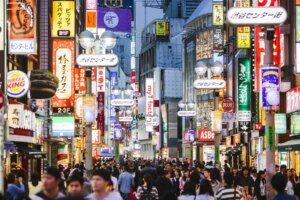Moving to a new country like Japan is exciting. But you may be wondering how much money you’ll need to budget for your everyday life and whether your wages will cover it.
As an expat in Japan, managing your finances across borders is another important consideration. Whether you’re sending money home, receiving funds from overseas, or managing expenses in multiple currencies, finding cost-effective solutions can help stretch your budget further. Wise supports Japanese yen alongside other currencies, making international transfers, and spending in Japan with a debit card. More on that later.
Below, you’ll find an overview of all the costs you’ll need to account for when living in Japan. Learn how to navigate your expenses through the following topics:
SafetyWing
Stay protected worldwide with Nomad Insurance Complete from SafetyWing. This medical and travel insurance plan covers check-ups, mental health, maternity care, travel protection, and up to $1.5 million in emergency care in 170+ countries, including your home country. Sign up today and save 10% when you choose annual payment.
How is Japan’s economy?
Japan has the fourth-highest GDP in the world (¥630 trillion) after the United States, China, and Germany. The service sector accounts for 71% of its economy, while industry and agriculture constitute 27% and 1%, respectively.
Its per capita GDP is approximately ¥5.1 million, putting it below the US and Germany but higher than China. This represents the lowest GDP per capita among the G7 countries.
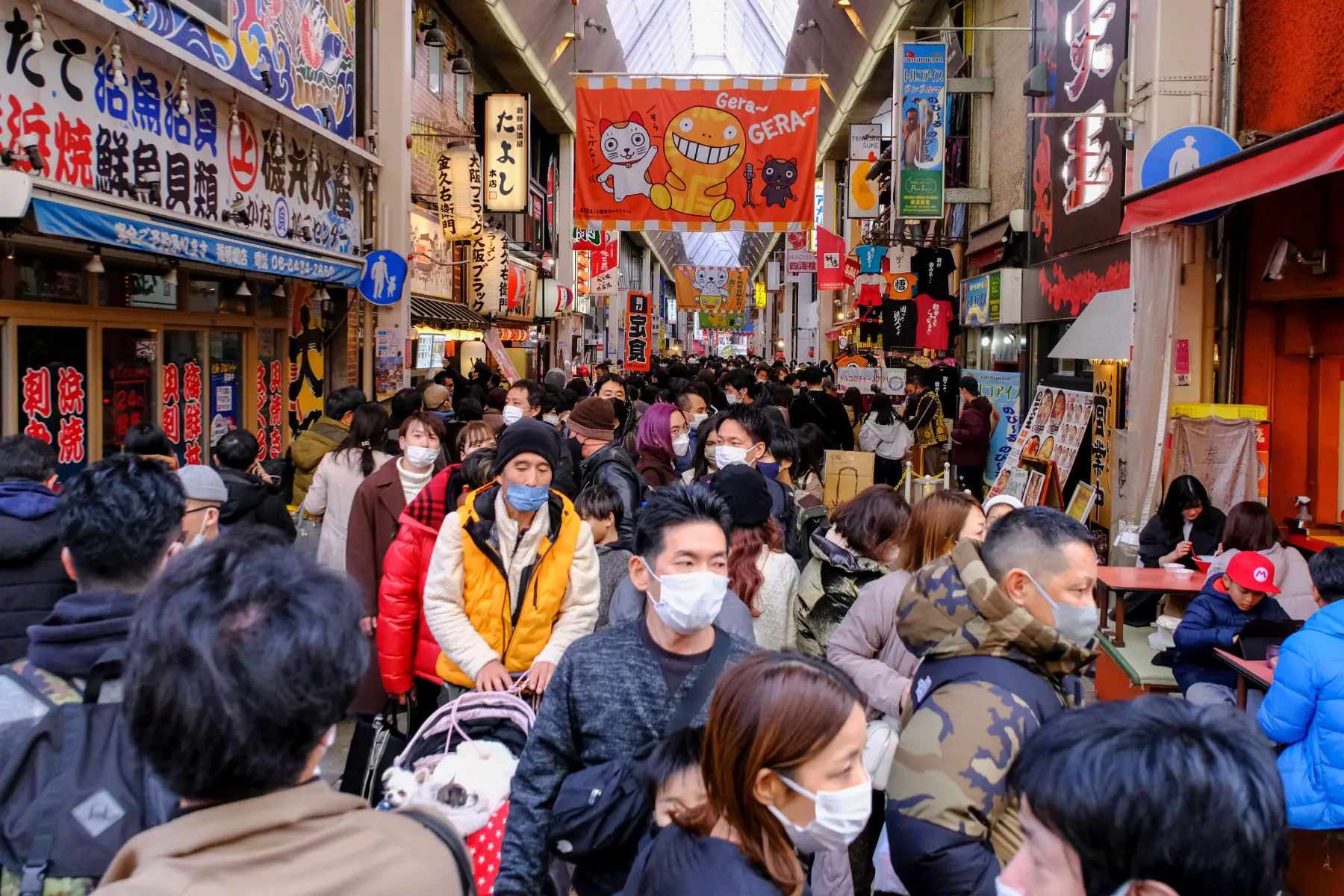
At the prefectural level, the Japanese capital, Tokyo, has the highest GDP and GDP per capita.
Inflation and disposable income in Japan
Like many countries in recent years, Japan experienced relatively high inflation in 2022 (2.5%) and 2023 (3.3%). It hit a high in December 2024 (3.6%), but the Bank of Japan forecasts a slowdown from the second half of 2025.
The average disposable yearly income in Japan ($28,872, or around ¥4.4 million) is lower than the OECD average of $30,490 (about ¥4.6 million). Considering the average household spent ¥300,243 per month in 2024, this gives an insight into why many people struggle to make ends meet.
The poverty rate in Japan is around 15.4%, one of the highest among OECD countries. You can read more about Japan’s minimum wage and average salaries in our dedicated article.
For expats managing money in multiple currencies, currency exchange costs can significantly impact your disposable income in Japan. When transferring money into the country or converting foreign earnings to Japanese yen, the exchange rate and fees matter.
Wise uses the mid-market exchange rate with low transparent fees, helping you avoid the high conversion costs that most providers often charge. This can be particularly useful if you’re managing finances in multiple countries or regularly need to convert between currencies.
Japan compared to nearby countries
Japan shares maritime borders with several other countries, including economic powerhouses China and South Korea, two of its largest trading partners. Its largest export partner is the US, but most of its trade is with other Asian countries.
The country’s location in the Pacific means it has access to key sea trade routes. Its main exports are cars, machines, and circuits.
The cost of living in Japan in 2025
One-person households in Japan have an average monthly expenditure of ¥170,559 per month (Q4 2024), while households with two or more people spend ¥300,243.
Expenditure tends to be higher in major and middle cities than in rural areas. Toyama has the highest monthly household expenditure (¥286,405), while Okinawa has the lowest (¥192,262). The average in the Kanto region (including Tokyo) is ¥265,914.
The price of groceries in Japan
Food and drink
In 2024, the average monthly spending on food for a one-person household was ¥46,302, and ¥69,530 for all households.
Below are some prices for food that you might find in Japan*:
| Product | Price range | Product | Price range |
| Bananas (1 bunch) | ¥158–398 | Potatoes (1 kilo) | ¥558–798 |
| Bread (1 loaf) | ¥97–680 | Regular milk (1 liter) | ¥219–399 |
| Coffee (1 kilo) | ¥2290–6200 | Rice (1 kilo) | ¥790–1200 |
| Eggs (10) | ¥219–681 | Tea (per bag) | ¥12–59 |
| Orange juice (900ml) | ¥359 | Tomatoes (1 kilo) | ¥1326–1996 |
Beer, wine, and liquor
The average household in Japan spends around ¥3,000 on alcoholic beverages per month.
Alcohol prices have steadily risen with inflation, and buying a local beer (0.5-liter bottle) from the supermarket can cost you between ¥200 and ¥450. Imported beers (0.33-liter bottle) cost more, around ¥250 to ¥550.
Hygienic and household products
Household and hygiene products, such as dishwashing liquid, soap, and shampoo, are useful for keeping yourself and your home clean and tidy. Here is what you can expect to pay for such items*:
| Product | Price range | Product | Price range |
| All-purpose cleaner (400 ml) | ¥412 | Shampoo (1 liter) | ¥760–7800 |
| Deodorant (150 ml) | ¥649–799 | Soap (1 liter) | ¥630–2610 |
| Dish soap (1 liter) | ¥420–1480 | Tampons (per tampon) | ¥30–40 |
| Garbage bags (per bag) | ¥3–23 | Toilet paper (per roll) | ¥29–190 |
| Laundry detergent (1 liter) | ¥380–2190 | Toothpaste (100 ml) | ¥199–1820 |
Japanese housing costs in 2025
Rent and property prices
As in other countries, property rental prices in Japan differ greatly by city and region and by the type and size of property. Here are the average monthly rental costs for apartments in several Japanese cities:
| City | 30m2 or less | 30m2–50m2 | 50m2–70m2 | 70m2+ |
| Tokyo | ¥96,163 | ¥156,831 | ¥231,726 | ¥369,312 |
| Osaka | ¥52,552 | ¥101,883 | ¥147,137 | ¥271,248 |
| Nagoya | ¥59,727 | ¥79,410 | ¥97,794 | ¥148,386 |
| Sapporo | ¥43,644 | ¥61,948 | ¥93,765 | ¥142,613 |
Japan’s housing market is competitive, especially in urban areas like Tokyo and Osaka. As such, you can expect to pay a premium for a home you want to buy. The country’s residential property price index experienced a year-on-year rise of 1.9% rise from 2023 to 2024.
However, this increase has slowed from the rates of 7.7% in 2022 and 6.3% in 2021.
Houses (single-family) cost an average of between ¥30 million to 50 million, although this price fluctuates depending on the property size and location.

Depending on where you compare property prices to, Japan can be seen as relatively expensive or relatively cheap. For example, homes in Tokyo are, on average, more affordable than in Singapore, Seoul, or Beijing. However, it is generally more expensive than in Thailand, the Philippines, and many Chinese cities.
If you need to receive funds from abroad to pay rent or make an international money transfer for housing deposits, using Wise can help you save on transfer costs. You can send money to Japan using the mid-market exchange rate with low transparent fees.
For those maintaining properties abroad while living in Japan, Wise also allows you to send Japanese yen internationally, making it straightforward to manage international housing obligations.
Utility bills: water, gas, electricity
On average, households spend about ¥19,000 per month on utilities in Japan. You can expect electricity to account for just over half the costs of your utility bills – in fact, Japan has the third-highest electricity prices in the Asia-Pacific region.
Of course, bills can vary greatly depending on your usage, home, house fittings, and city.
Healthcare costs in Japan
Japan has a healthcare system that covers both locals and internationals. The Social Health Insurance scheme (社会保険制度) applies to most employees, while others, such as freelancers, qualify for the National Health Insurance (NHI) (国民健康保険)
With Japan’s national insurance coverage, your healthcare expenses should be relatively low. The government subsidizes 70% of medical costs for patients aged 6–70, leaving most people with a 30% copayment for healthcare treatment.
This decreases to 20% for children under six and older adults 70–74, then to 10% after age 75. The maximum copayment depends on your income and age – it ranges from ¥15,000 to ¥252,600 per month. However, this maximum is expected to rise from August 2025.
Internet and telecom costs in Japan in 2025
When moving to Japan, you’ll likely need home internet and a cell phone with a Japanese SIM card. Telecommunications costs are high when compared with China and South Korea, but they are cheaper than Singapore.
On average, home broadband internet costs ¥5940 per month, but you can find deals for as little as ¥812. Meanwhile, mobile data costs an average of ¥513 per 1GB, making Japan one of the most expensive countries to use mobile internet.
Research in 2024 claims the average monthly mobile phone bill was ¥8,636, but it’s possible to find plans for as little as ¥2,000.
Costs of clothing and footwear in Japan
As with other countries, Japan has a wide range of clothing stores where you can find from affordable brands to high-end designer pieces.
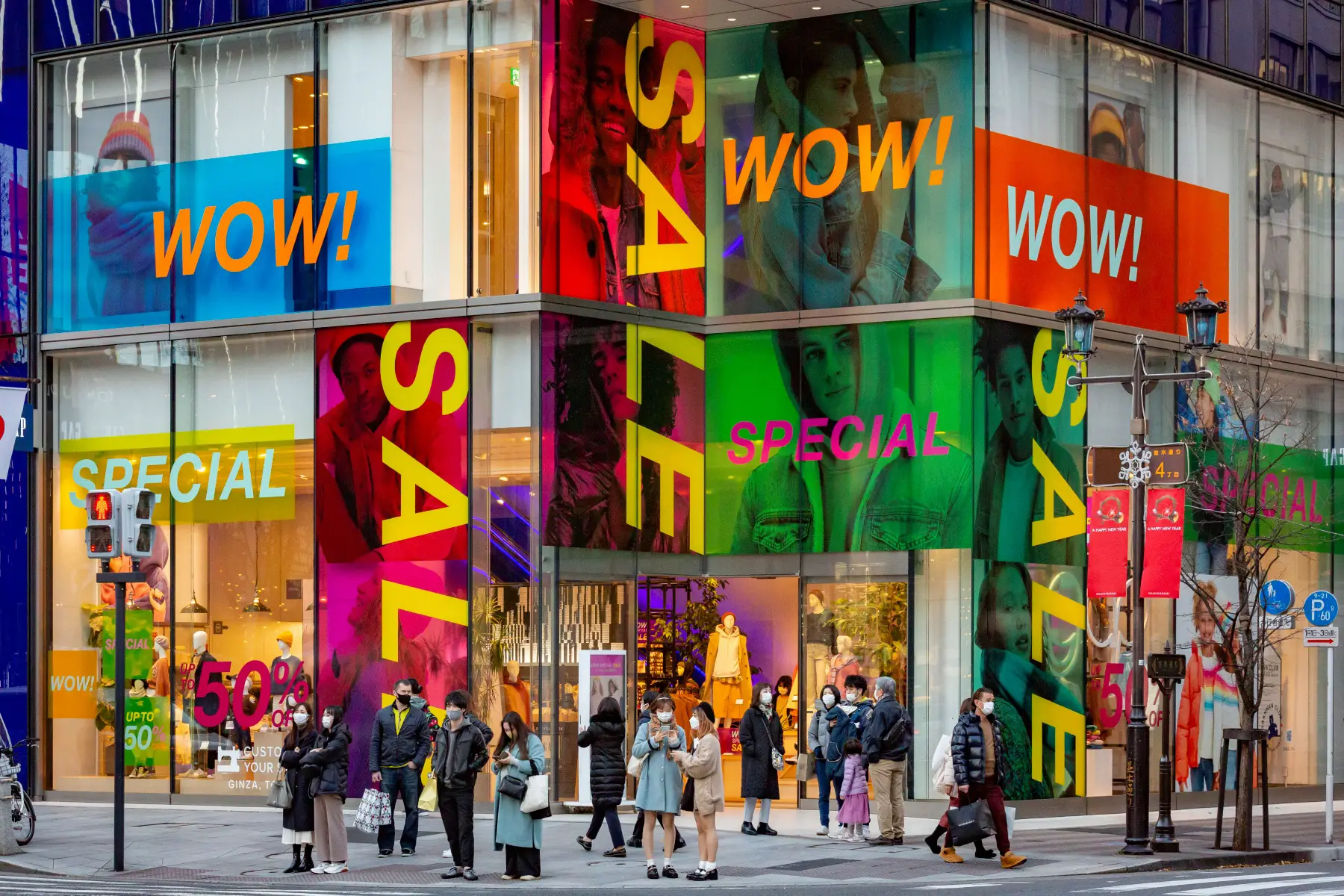
To give you an indication of how much stores will charge, here are some average prices:
- Levi’s jeans: ¥6,700
- Summer dress from Zara: ¥4,700
- Men’s leather formal shoes: ¥12,300
Japanese transportation costs
Public transport
Tickets for public transport in Japan vary significantly between companies and cities. However, here are some examples of subway/metro costs in large cities:
- Tokyo: 24-hour tickets are available for ¥800. Otherwise, you can visit the Tokyo Metro website to explore fares.
- Yokohama: This city’s One Day Bus and Subway Pass costs ¥830, but you can calculate your fare on Yokohama’s transport website.
- Osaka: Prices start at ¥190 for journeys of under 3km. Day cards are also available for ¥820.
- Nagoya: Single tickets cost ¥210–340, depending on the zones you travel through.
Most cities offer monthly or annual passes to save money on regular journeys.
For travel between cities, you can expect to pay more. In our guide to public transportation in Japan, you can explore fare structures and different types of tickets.
For everyday spending on public transport and other purchases in Japan, the Wise debit card lets you spend Japanese yen using the mid-market exchange rate. If you hold yen in your Wise Account, there’s no conversion fee when you spend.
Driving and vehicle costs
If you’re considering buying your own car in Japan, the average purchase price is about ¥2.64 million (2023). However, most EV and hybrid cars cost more than ¥3 million. Used cars fetch between ¥100,000–1 million depending on their age and condition.
As well as a driving license and vehicle, you should factor in the following costs for driving in Japan:
- Car insurance – compulsory liability insurance costs ¥17,650 for standard vehicles for 24 months. Optional additional insurance costs several times more.
- Taxes – Depending on the size and age of your car, this is usually between ¥29,500 and ¥51,000 per year.
- Fuel costs – gasoline costs around ¥185.10 per liter (February 2025), while diesel costs about ¥164.70 per liter.
- Maintenance – the average household spends about ¥14,185 per month on vehicle maintenance.
How much do leisure activities cost in Japan?
Japan is home to a plethora of leisure activities, from museums and cultural sites to concerts, theaters, gaming arcades, karaoke, and more. If you want to indulge, though, it helps to know how much you’ll spend. The average Japanese household spends ¥14,744 on ‘recreational services’ per month.
Movies and karaoke
A movie ticket in Japan costs ¥1,500–2,500, but you can sometimes get cheaper weekday tickets, and many cinemas offer discounts for seniors, disabled people, and students. Cinemas in Tokyo also sell cheaper tickets on the first day of the month.
Karaoke is also an extremely popular way to spend an evening in Japan – it is the birthplace of this activity, after all. It’s usually charged per person per hour, but many places offer better rates during off-peak times.
Restaurants
Japan has a wealth of gastronomic experiences on offer, from cheap street food to luxurious fine dining.
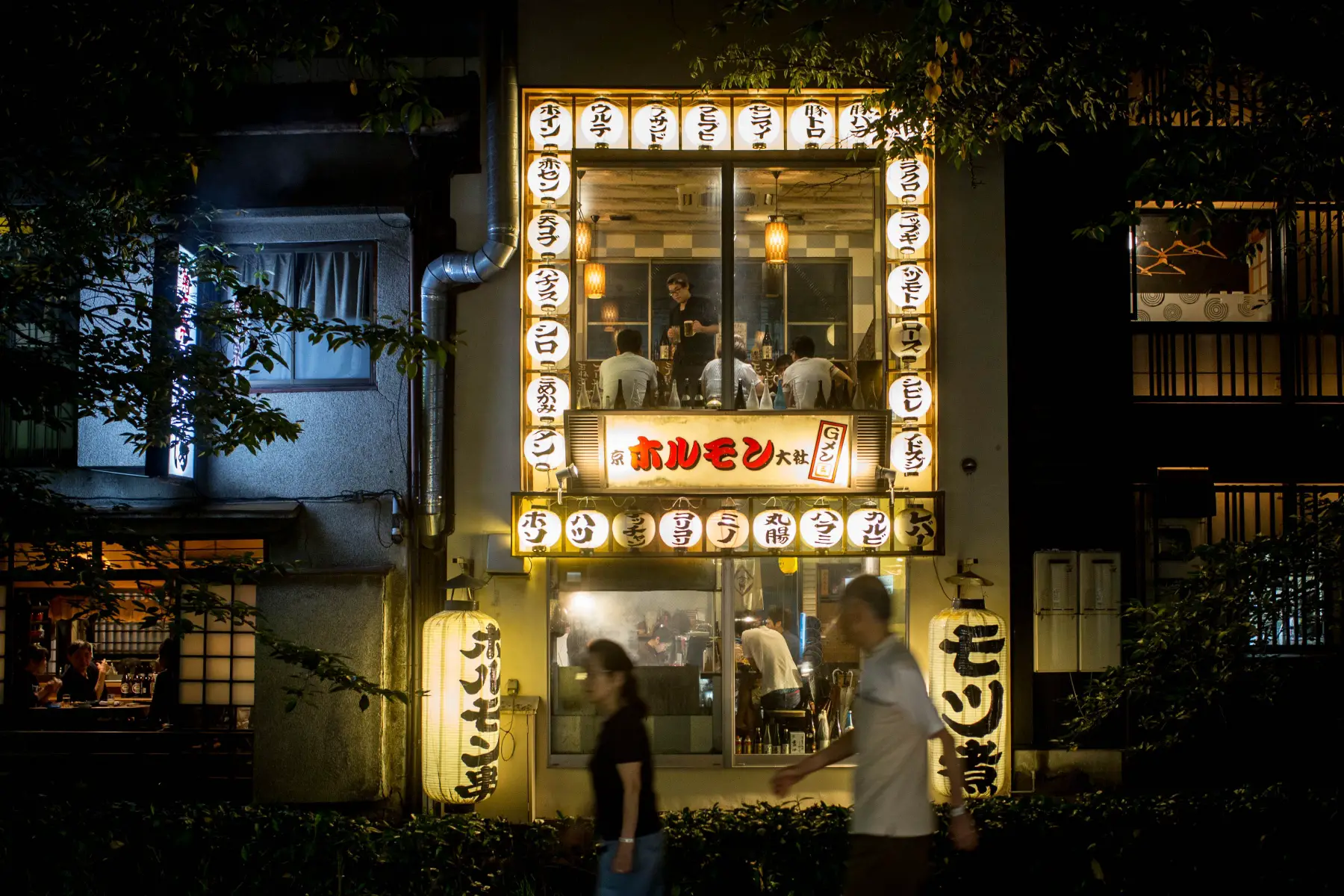
Below are some average prices for eating out in Japan:
- Inexpensive meal at a restaurant: ¥600–1,500
- Three-course dinner for two at a mid-range restaurant: ¥3,600–11,000
- McDonald’s combo/cheap ramen meals: ¥700–900
Sports
If you’re planning to hit the gym in Japan, you can get a monthly membership for about ¥8,600. Meanwhile, a pair of running shoes will set you back around ¥8,800.
Rather watch than take part? A ticket to a baseball game at the Tokyo Dome costs ¥1,500–¥15,000.
Education and childcare costs in Japan
The average Japanese household spends about ¥7,300 on education per month.
Childcare
Childcare in Japan, suitable for babies and preschoolers, is becoming increasingly popular. Daycare prices differ significantly, from completely free to ¥70,000 a month for public and between ¥40,000 and ¥80,000 for private.

State facilities also account for parents’ annual income. You can usually find a list of fees on your local ward’s website.
If you want more dedicated childcare, hiring a nanny is another option in Japan. You should expect to pay around ¥1,600 per hour or roughly ¥3.3 million per year for their services.
Children’s education
Public school in Japan is free, but you may need to factor in additional costs such as PTA fees, books, and extracurriculars. On average, these cost ¥81,753 per year for public elementary school and ¥351,452 for high school. Meanwhile, the costs for private elementary and high school are ¥1,054,083 and ¥766,490 respectively.
International schools are also popular with expat families but also more pricey, with annual fees differing between institutions and locations. Of course, you will pay more in a metropolis like Tokyo (around ¥1.97 million).
Even though international schools have become more affordable recently, you should still budget around ¥308,909 for kindergarten and up to ¥1,054,444 for secondary school.
University tuition fees
Thinking of studying in Japan? You’ll need to account for tuition fees. These depend on where and what you study.
The Ministry of Education, Culture, Sports, Science and Technology (MEXT) sets the standard tuition fee for national universities at ¥535,800 per year, but some charge more than this – The University of Tokyo has increased its annual tuition fee to ¥642,960 for 2025 for domestic and international students.
Private universities generally charge more – an average of ¥1,477,339 in 2023.
Starting in April 2025, families with more than three children can apply for assistance with university tuition fees.
How does Japan compare to the rest of the world?
Japan can be expensive, but it also offers a relatively high standard of living.
Although it scores quite highly in areas such as education and safety on the OECD Better Life Index, it ranks below average on work-life balance and civic engagement. Many employees work very long hours, and election turnout is generally low.
Tokyo is Japan’s highest-scoring city on the Mercer Quality of Living Index, appearing in 56th place. Other Japanese cities on the ranking include:
- Yokohama (58th)
- Osaka-Kobe (68th)
- Nagoya (74th)
Tokyo is the second highest-scoring city in Asia on this index after Singapore (30th).
The cost of living in Tokyo
Life in Tokyo (東京) costs a pretty penny. It is one of the most expensive cities to call home, globally and nationally.
When compared to other major cities, Tokyo’s cost of living is (as of February 2025):
- 47.2% lower than New York (United States)
- 31.8% lower than London (United Kingdom)
- 37.3% higher than Shanghai (China)
- 86.1% higher than Ho Chi Minh City (Vietnam)
- 88.3% higher than Jakarta (Indonesia)
- 142.2% higher than Delhi (India)
The cost of living in Osaka
Osaka, another metropolis popular with internationals, also has a high cost of living but is cheaper than Tokyo.
The cost of living is (as of February 2025):
- 58% lower than New York
- 45.8% lower than London
- 9.1% higher than Shanghai
- 48% higher than Ho Chi Minh City
- 49.7% higher than Jakarta
- 92.5% higher than Delhi
The cost of living in Nagoya
The central Japanese city of Nagoya also attracts its fair share of internationals, given that it is home to many multinational corporations. Its cost of living is lower than Tokyo’s and slightly more expensive than Osaka’s.
In February 2025, its cost of living is:
- 56% lower than New York
- 43.2% lower than London
- 14.4% higher than Shanghai
- 55% higher than Ho Chi Minh City
- 56.9% higher than Jakarta
- 101.7% higher than Delhi
The cost of living in Kyoto
Bursting with tradition and culture, Kyoto is an attractive city for new arrivals in Japan. But, as one of the country’s biggest cities — and one of the most popular with tourists — it is also expensive to live in.
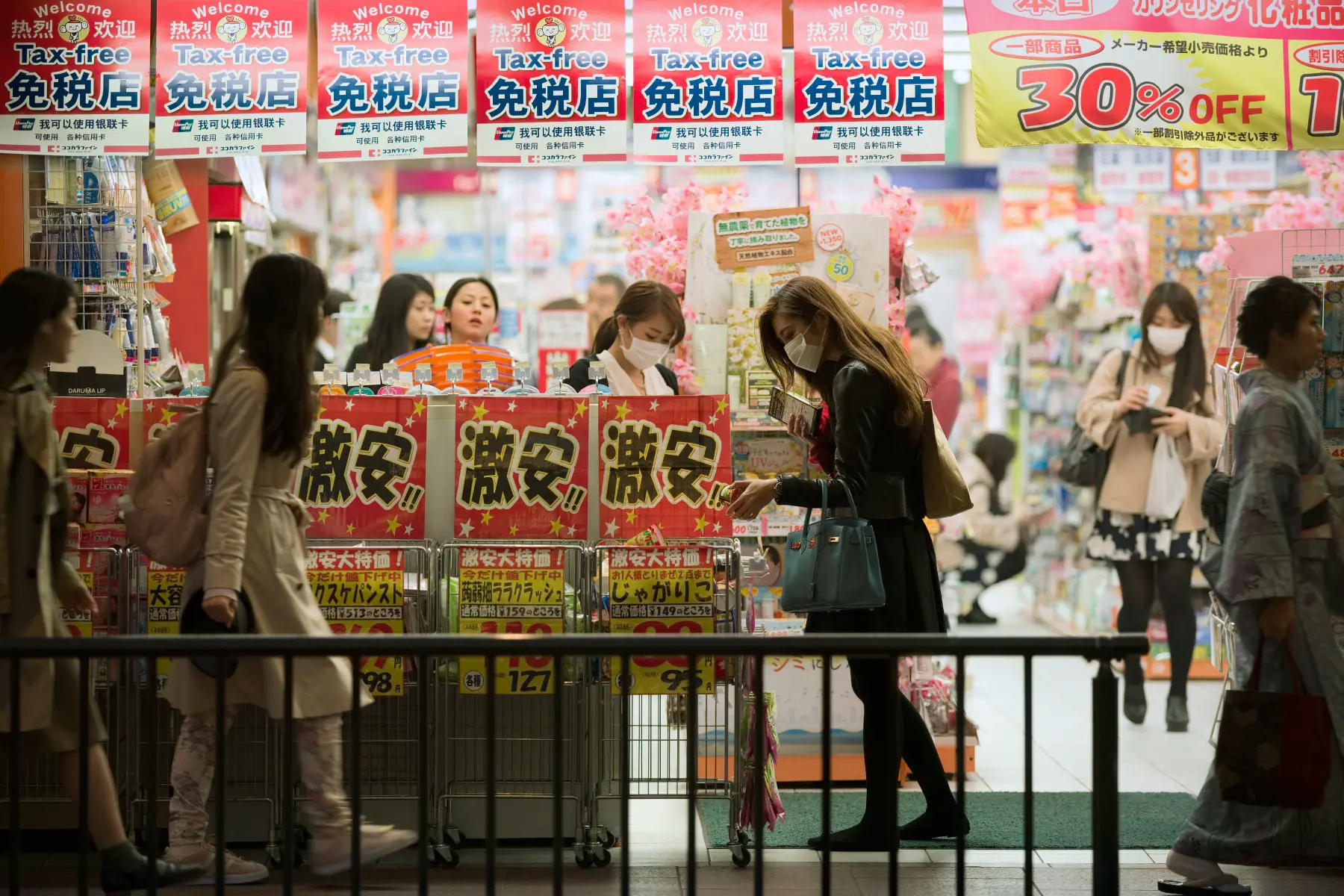
As of February 2025, the cost of living in Kyoto is:
- 57.6% lower than New York
- 45.2% lower than London
- 10.3% higher than Shanghai
- 49.5% higher than Ho Chi Minh City
- 51.2% higher than Jakarta
- 94.5% higher than Delhi
The cost of living in Yokohama
Despite being Japan’s second-most inhabited city, Yokohama has far fewer residents than Tokyo, which is reflected in the cost of living. Therefore, internationals will find it one of the cheaper big cities to live in.
The cost of living in Yokohama is, as of February 2025:
- 56% lower than New York
- 43.1% lower than London
- 14.5% higher than Shanghai
- 55.2% higher than Ho Chi Minh City
- 57% higher than Jakarta
- 101.9% higher than Delhi
Financial aid for the cost of living in Japan
The Japanese government offers certain grants and relief schemes to help residents struggling to meet living costs. In most cases, the person or household must meet income requirements to qualify for assistance. You can see some of these below:
- Rent Relief Grants (住居確保給付金): Assistance in paying rent if a household’s primary breadwinner has lost a job or business. The applicant must meet the total household savings thresholds and be actively job-hunting.
- Childcare subsidies (幼児教育・保育の無償化): Parents with children between 0–5 years can have up to ¥42,000 deducted monthly for kindergartens, daycare centers, and early childhood care. However, families have to meet an income requirement to qualify.
- Social services for senior citizens (介護・高齢者福祉): Include home visits, short-stay nursing homes, in-home care, and home nursing services
Tips for saving money in Japan
- Shop at discount supermarkets and 100-yen stores – OK Supermarket offers discounted goods, and 100-yen stores like Daiso and Seria sell goods for ¥100 plus tax. You can also get wholesale products at Gyomu Super.
- Buy food in the evening – Many supermarkets sell fresh meals (bento boxes, sushi etc.) and meat at a cheaper price in the evening to clear inventory.
- Use point cards and cashback apps – Store loyalty programs such as T-Point and Rakuten can let you save points towards purchases, and apps like PayPay provide cashback and discounts.
- Choose budget restaurants – Affordable chains such as Sukiya, Matsuya, and Yoshinoya offer meals for under ¥600. Meanwhile, conveyor belt sushi is the cheapest way to enjoy this Japanese food.
- Take advantage of free events and museums – Many parks, shrines, and museums have free entry or discounted days.
- Get a train pass or IC card – If you commute regularly, these are convenient and can save you money.
- Shop at second-hand stores – Japan is home to second-hand stores such as BOOKOFF and Hard Off. Alternatively, you could use the Mercari app to buy and sell used goods.
- Rent a pocket WiFi – If you’re staying in Japan for a short time, a pocket Wi-Fi can work out cheaper than a SIM card with a data plan.
- Use free public spaces and community centers – Instead of pricey gyms or co-working spaces, check out local sports centers, libraries, and public parks for free or low-cost activities. You could also make friends at local events.
Useful resources
- Numbeo – more cost of living figures for Japan as a whole, as well as Japanese cities
- OECD Better Life Index – provides a deeper look at the quality of life in Japan, including housing, education, and healthcare


